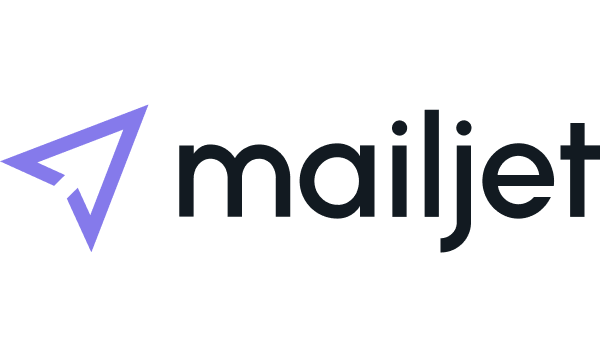- Premium features included
- No hidden costs or usage limits
- Scale from startup to enterprise



Let’s be honest — picking the right email marketing tool can be a game-changer for your business relationships, engagement levels, and overall growth. There are tons of options out there, so finding one that fits both your needs and wallet is crucial.
I’ve spent countless hours testing both Mailjet and Mailchimp for different clients, and they each have their own special appeal.
Mailjet has made a name for itself with budget-friendly pricing, straightforward usability, and some pretty neat collaborative editing features — making it perfect for teams who need to work together on campaigns without the headaches.
Mailchimp, on the other hand, is the powerhouse with impressive automation capabilities, tons of integrations, and segmentation tools that can get surprisingly granular — ideal when your brand is growing and needs more sophisticated marketing approaches.
I’m going to break down how these two platforms compare across pricing (because who doesn’t care about that?), features, ease of use, and overall performance. By the end, you’ll have a clearer picture of which one might be the better fit for where your business is headed.
Mailjet
Mailchimp
Best For
Small teams, collaborative email creation
Growing brands with advanced automation needs
Pricing
Free plan + paid plans from $15/month
Free plan + paid plans from $13/month
Ease of Use
Simple, user-friendly interface
Intuitive but feature-rich dashboard
Value for Money
Affordable for basic campaigns & teamwork
Great for advanced features but costly at scale
Overall Strengths
Overall Weaknesses
Mailjet
Affordable pricing, real-time collaboration, unlimited contacts
Limited automation & advanced segmentation
Mailchimp
Advanced automation, deep integrations, strong analytics tools
Higher pricing; features gated in higher tiers
Mailjet
Mailchimp
Email Campaigns
Automation
Landing Pages & Forms
Segmentation & Personalization
Reporting & Analytics
Integrations
Mailjet works best for small businesses and marketing teams that need a straightforward, collaborative email solution without getting lost in complex automation setups.
Their standout feature is definitely the real-time team collaboration — multiple people can work on building and editing campaigns simultaneously without stepping on each other’s toes.
While they do offer basic automation and segmentation, Mailjet clearly prioritizes simplicity, affordability, and user-friendliness. It’s perfect for teams that just need to communicate effectively through email rather than creating elaborate marketing funnels.
Mailchimp has evolved into a much more sophisticated platform for businesses ready to level up their marketing efforts with complex automation, detailed segmentation, and comprehensive analytics.
They excel at creating multi-step customer journeys, personalizing content dynamically, and providing the kind of in-depth reporting that actually helps you make better decisions. Their massive integration ecosystem is particularly valuable for ecommerce brands and data-driven marketers.
Just be warned — Mailchimp’s pricing increases dramatically as your list grows and you need more features, so it’s better suited for businesses prepared to invest in advanced email marketing strategies across multiple channels.
Subscriber Count
Mailjet Pricing (Premium Plan)
Mailchimp Pricing (Standard Plan)
Key Differences
1,000
From $15/month
From $20/month
Mailjet more affordable; Mailchimp offers better automation.
2,500
From $25/month
From $39.50/month
Mailjet includes unlimited contacts; Mailchimp limits lower tiers.
5,000
From $35/month
From $70/month
Mailjet remains budget-friendly; Mailchimp supports advanced segmentation.
10,000
From $55/month
From $100/month
Mailjet better for bulk email sending; Mailchimp excels in reporting and insights.
25,000
From $125/month
From $230/month
Mailjet is more cost-effective at scale; Mailchimp includes predictive analytics and CRM features.
Mailjet offers a really affordable pricing structure, especially if you’re just focused on sending straightforward email campaigns to lots of people. Their pricing scales in a predictable way, making it ideal for small businesses or teams looking for a collaborative email solution without complex marketing bells and whistles.
Mailchimp is noticeably more expensive at every tier — sometimes double the price or more. But in fairness, you’re paying for powerful automation capabilities, more sophisticated audience targeting options, and analytics that actually help you understand what’s working.
It’s designed for businesses willing to invest more in advanced marketing strategies that can drive measurable results at scale.
Mailjet Free Plan
Mailchimp Free Plan
Subscribers
Unlimited contacts
Up to 500 subscribers
Emails/Month
6,000 emails/month (200/day limit)
1,000 emails/month
Automation
Basic automation included
Single-step automation only
Landing Pages/Forms
Signup forms only
Unlimited landing pages & signup forms
Branding
Mailjet branding on emails
Mailchimp branding on emails & pages
Mailjet’s free plan is great if you care more about reaching lots of people than having fancy marketing features. You can have unlimited contacts and send up to 6,000 emails monthly — though be aware of that 200/day sending limit. You’ll get basic automation tools, but not much beyond that.
This works well if you’re mostly sending newsletters or simple campaigns to larger audiences.
Mailchimp’s free approach gives you more marketing capabilities — you get unlimited landing pages and basic one-step automation. The big limitation? You’re capped at just 1,000 emails per month total.
This setup works better for small businesses or creators who want to experiment with some automation, build landing pages, or run basic signup campaigns without immediately investing money.
Both platforms will slap their branding on your free plan emails, and neither offers great support access unless you’re paying. Classic freemium model.
Mailjet
Mailchimp
I’ve come to think of Mailjet as the no-nonsense, cost-effective option in the email marketing world. After using it for several client projects, I appreciate how it strips away the complexity and focuses on core functionality.
What makes Mailjet stand out is its approachability for smaller businesses and startups. The pricing won’t give you sticker shock, you’ll never hit subscriber limits, and the real-time collaboration features are genuinely useful if you’ve got multiple team members working on campaigns.
I’ve had clients with minimal technical skills create and launch campaigns within an hour of introducing them to the platform.
The downside? Mailjet isn’t trying to be your all-in-one marketing solution. There’s no landing page builder (a serious omission in my book), the automation capabilities are fairly basic, and you won’t find sophisticated CRM features.
For companies looking to build complex customer journeys or deeply personalized campaigns, these limitations could be dealbreakers.
Mailchimp has evolved dramatically from its newsletter roots, and it shows. After working with dozens of clients on this platform, I’ve seen firsthand how it can transform marketing efforts for growing businesses.
Where Mailchimp really shines is in its marketing ecosystem. The automation capabilities are robust enough for sophisticated workflows, the reporting gives you genuine insights (not just vanity metrics), and the personalization options let you create truly dynamic content.
For businesses ready to invest in advanced targeting and multi-channel marketing, Mailchimp delivers.
But here’s the catch – that power comes at a price, literally. Their pricing structure can be downright painful as your subscriber list grows, and many of the most valuable features are locked behind higher tiers. I’ve had several clients forced to downgrade their marketing ambitions or switch platforms entirely when faced with Mailchimp’s pricing jumps.
Mailjet consistently earns praise for its clean interface and intuitive email editor. I’ve witnessed this firsthand — even marketing newcomers can typically build and send campaigns without constant reference to help docs. There’s something refreshing about tools that don’t try to overwhelm you with options.
Mailchimp also gets positive marks for usability, though there’s a bit more nuance here.
The basic functions are accessible enough, but I’ve noticed that users sometimes feel overwhelmed when trying to access more advanced features. One client described it as “easy to get started, but surprisingly complex once you dig deeper.”
The learning curve difference between these platforms is notable. With Mailjet, most users are up and running quickly — its straightforward approach and limited feature set mean there’s simply less to learn. I’ve found it perfect for small businesses or teams without dedicated marketing specialists.
Mailchimp requires more investment to master. While the basics are approachable, truly leveraging features like customer journeys, advanced segmentation, and detailed reporting takes time and effort. In my experience working with various clients, there’s often a 2-3 week adjustment period before teams feel comfortable with Mailchimp’s more sophisticated tools.
Mailjet users frequently highlight the platform’s value proposition. I remember one small business owner telling me, “It does exactly what we need without charging us for features we’ll never use.”
The unlimited contacts policy is especially popular among users with large but infrequently-emailed lists.
Mailchimp users tend to have more polarized opinions. While many praise its powerful features and integration capabilities, there’s a consistent undercurrent of frustration around pricing and support issues.
That abysmal Trustpilot score speaks volumes — and from what I’ve seen helping clients navigate billing issues, it’s not entirely undeserved. As one frustrated user put it, “Their pricing jumps feel designed to squeeze every possible dollar from growing businesses.”
